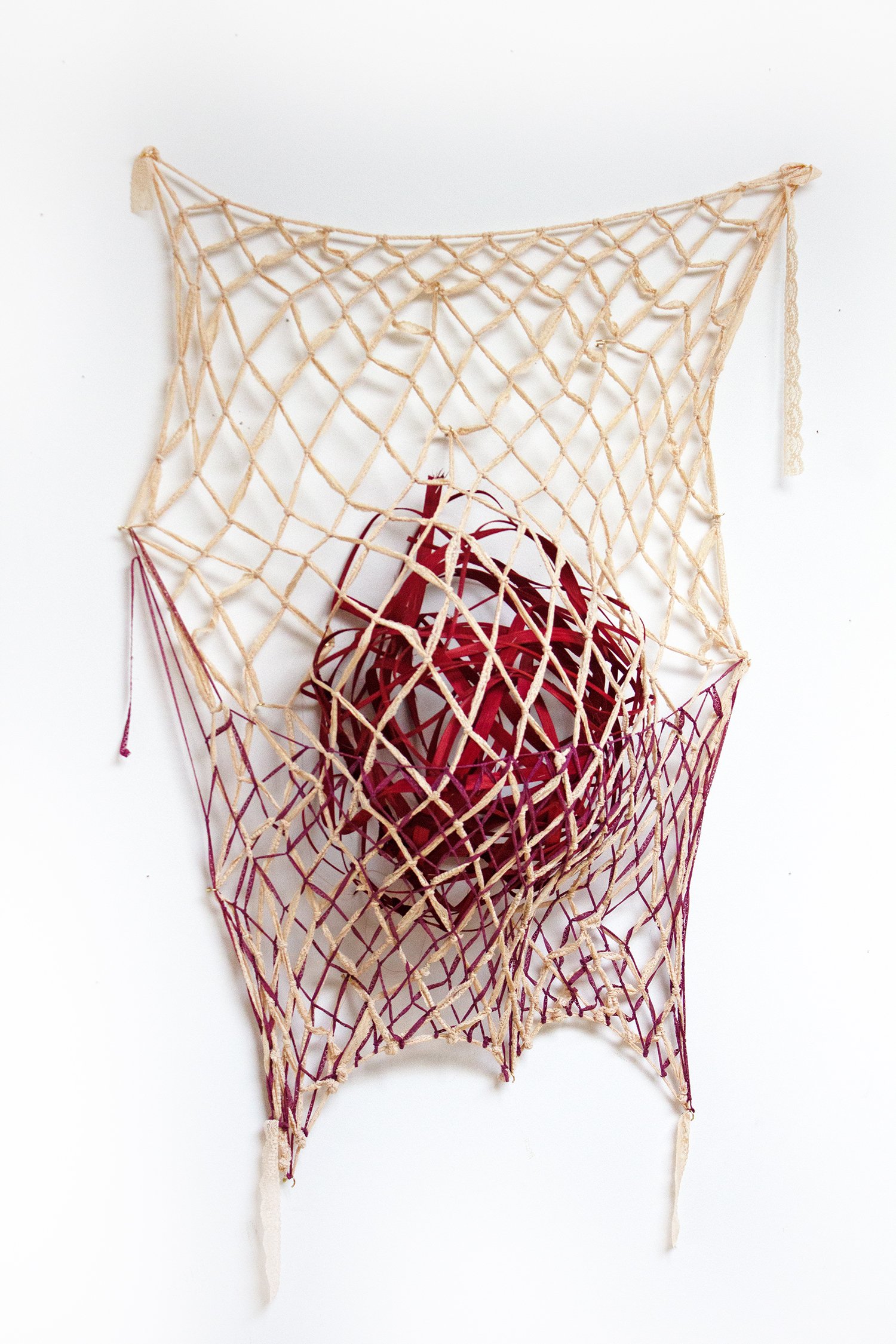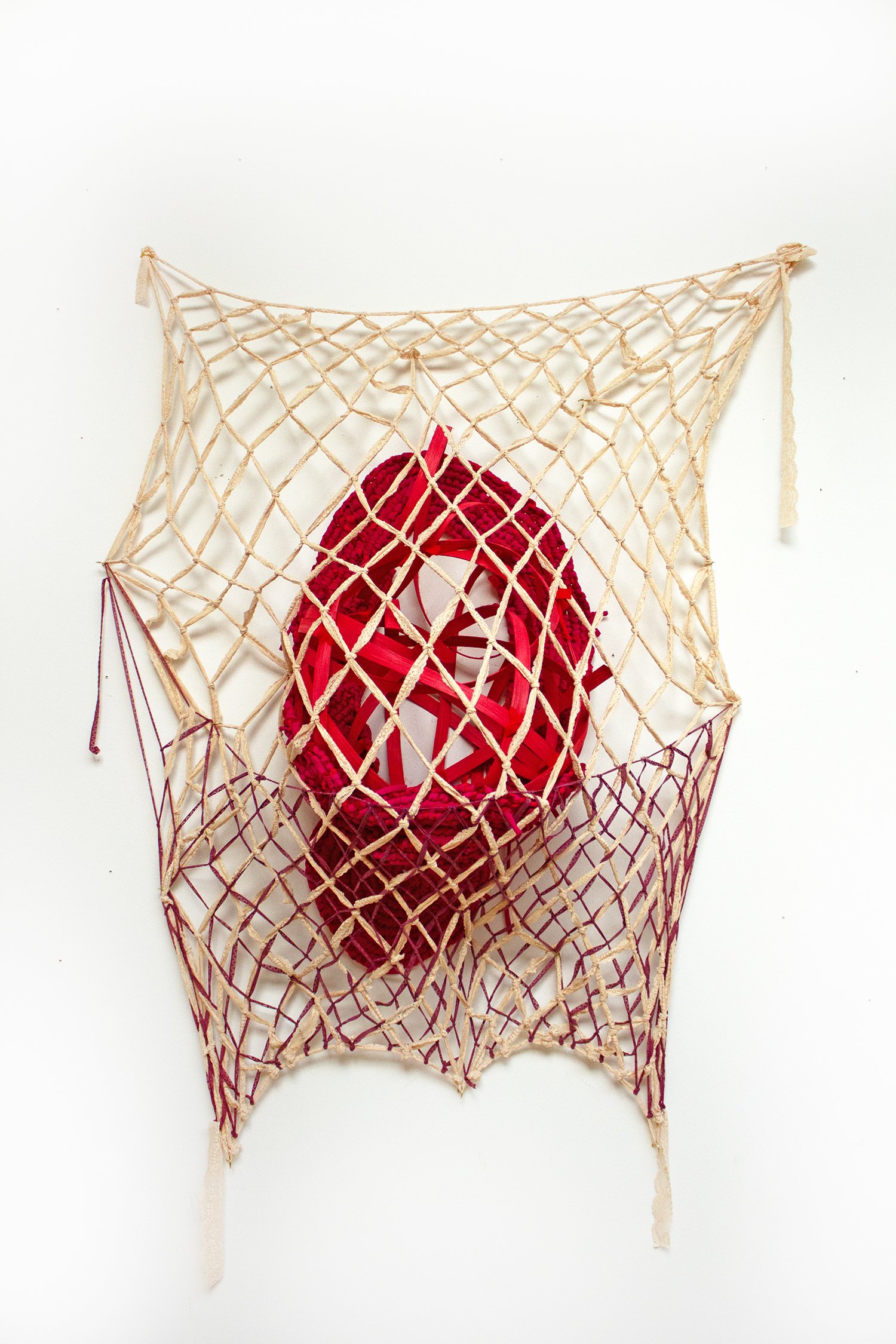
Found object, found textiles, elastic bra strapping, cord and ribbon.
23 × 17.5 × 13.5 inches

Elastic bra strapping, wire, plastic tubing, rubber tubing.
20 × 38 × 18 inches

Dyed reed, iridescent cord, found textiles, handmade rope, linen cord, elastic bra strapping, wire rod and s-hooks.
42 × 24 × 12 inches

Dyed reed, elastic bra strapping, metal rod and s- hooks.
63 × 24 × 14 inches

Dyed reed, synthetic cord, elastic bra strapping.
64 × 46 × 30 inches

Dyed reed, elastic bra strapping.
35 × 48 × 10.5 inches

Dyed reed, found textiles, elastic bra strapping.
35 × 48 × 10.5 inches

Found object, found textiles, hand made rope, elastic bra strapping.
35 × 54 × 23 inches

Found object, found textiles and elastic bra strapping.
42 × 39 × 6.5 inches

Found textiles, hand made rope and elastic bra strapping.
45 × 62 × 8.5 inches

Found textiles, found objects, glittered cord and synthetic cord.
50 × 42 × 14 inches











Found object, found textiles, elastic bra strapping, cord and ribbon.
23 × 17.5 × 13.5 inches
Elastic bra strapping, wire, plastic tubing, rubber tubing.
20 × 38 × 18 inches
Dyed reed, iridescent cord, found textiles, handmade rope, linen cord, elastic bra strapping, wire rod and s-hooks.
42 × 24 × 12 inches
Dyed reed, elastic bra strapping, metal rod and s- hooks.
63 × 24 × 14 inches
Dyed reed, synthetic cord, elastic bra strapping.
64 × 46 × 30 inches
Dyed reed, elastic bra strapping.
35 × 48 × 10.5 inches
Dyed reed, found textiles, elastic bra strapping.
35 × 48 × 10.5 inches
Found object, found textiles, hand made rope, elastic bra strapping.
35 × 54 × 23 inches
Found object, found textiles and elastic bra strapping.
42 × 39 × 6.5 inches
Found textiles, hand made rope and elastic bra strapping.
45 × 62 × 8.5 inches
Found textiles, found objects, glittered cord and synthetic cord.
50 × 42 × 14 inches